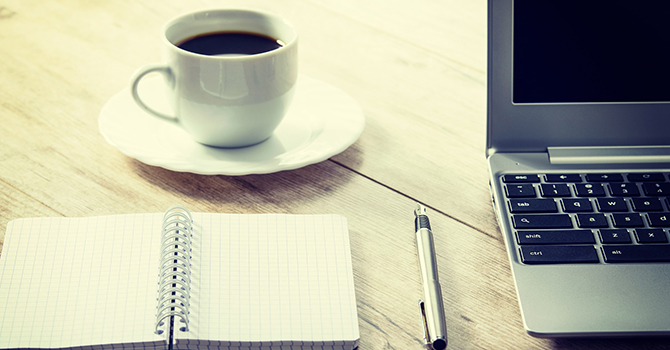Balancing Work and Life

Olivia Anderson
PhD, RD
I am all about work-life balance, but, in the age of smartphones and 24/7 connectivity, what exactly does that mean?
Whether you are a student or a professional, you have probably experienced work-life imbalance at some point, if not almost constantly. For many people, work creates a sense of fulfillment and an identity1. However, work is just one small piece of life.
There are economic, health, and other benefits to having a job,2 but long hours impact work productivity and accuracy as well as mental and physical health3, 4. For example, individuals working 41 or more hours per week are at increased risk for heart disease compared to their counterparts working 40 hours a week5.
We do not necessarily live to work6. This realization was brought to light by scholars and policymakers around 1980, prompting discussion about how organizations could implement policies to support finding a healthy balance between work and personal life.
As technology advanced, people started to assume that increased efficiency during the workday would make more time for life. It seems this hypothesis backfired.
High expectations for employees and students to always be accessible due to technology leads to more time outside of work spent on work-related activities. In a survey of US workers, more than 80 percent of respondents said they check email on the weekend and more than 30 percent check email before even getting out of bed7. In fact, full-time employees in the US break the standard 9-to-5, 40-hour workweek and rather work an average of 47 hours a week8.
It's important to be aware of your daily routine and ways you can shift to a healthier work-life balance. Self-reflection and actively adjusting behaviors at this stage will lead to long-term practices that enable your desired balance9.
These tips can help you achieve a healthy work-life balance:
- Take a minute each day to reflect on your current balance.
- Write—and stick to—daily to-do lists.
- Unplug. Leave your phone on silent, in your bag.
- Take 10-minute breaks to recharge—walk, meditate, do push-ups.
- Recognize and take advantage of periods of the day when you complete tasks effectively. For example, some people write better in the morning.
- If you have them, use your benefits, like vacation time and maternity/paternity leave, to recuperate and experience once-in-a-lifetime milestones.
- Exercise daily. If you think you don't have time for exercise, build it in by walking or biking to work, or take the stairs instead of the elevator.
In some ways, writing this blog seemed counterintuitive to work-life balance as these questions flooded my head: How does this experience fit into my work? (It supplements my teaching and research interests, but it's Saturday.) How does this fit into my life? (Again, it's Saturday. I could be playing with my kids.)
But was writing this blog worth it? Yes. Writing provided me time to reflect on my work and my family.
I began self-reflection and prioritizing tasks when I was a post-doc, part-time lecturer, and new mom all at once. To-do lists, exercise, and focusing solely on family when I am with them help keep my balance in check. Now I turn that question to you: What does work-life balance mean to you?
References
- Fryers T (2006) Work, identity and health. Clin Pract Epidemiol Ment Health 2:12
- STRULLY KW (2009) Job Loss and Health in the U.S. Labor Market. Demography 46:221–246
- Crowther S (1926) HENRY FORD: Why I Favor Five Days' Work With Six Days' Pay. World's Work 613–616
- Tsai JW, Muindi F (2016) Towards sustaining a culture of mental health and wellness for trainees in the biosciences. Nat Biotech 34:353–355
- Kivimäki M, Jokela M, Nyberg ST, et al (2017) Long working hours and risk of coronary heart disease and stroke: a systematic review and meta-analysis of published and unpublished data for individuals. Lancet 386:1739–1746
- Arthur L (2002) Work–Life Balance: Towards an Agenda for Policy Learning Between Britain and Germany.
- OpinionMatters (2013) U.S. Workers Spend 6.3 Hours A Day Checking Email: Survey.
- Saad L (2014) The "40-Hour" Workweek Is Actually Longer -- by Seven Hours. GALLUP
- Butler DL, Winne PH (1995) Feedback and Self-Regulated Learning: A Theoretical Synthesis. Rev Educ Res 65:245–281
About the Author
 Liv Anderson, PhD, MPH, RD, is a clinical assistant professor in the Department of Nutritional Sciences
at the University of Michigan School of Public Health. In her teaching practices,
she focuses on professional development for graduate students as well as nutritional
and public health considerations throughout the lifecycle. Her research focuses on
developing assessment techniques for student outcomes as well as developing and measuring
innovative pedagogy.
Liv Anderson, PhD, MPH, RD, is a clinical assistant professor in the Department of Nutritional Sciences
at the University of Michigan School of Public Health. In her teaching practices,
she focuses on professional development for graduate students as well as nutritional
and public health considerations throughout the lifecycle. Her research focuses on
developing assessment techniques for student outcomes as well as developing and measuring
innovative pedagogy.
